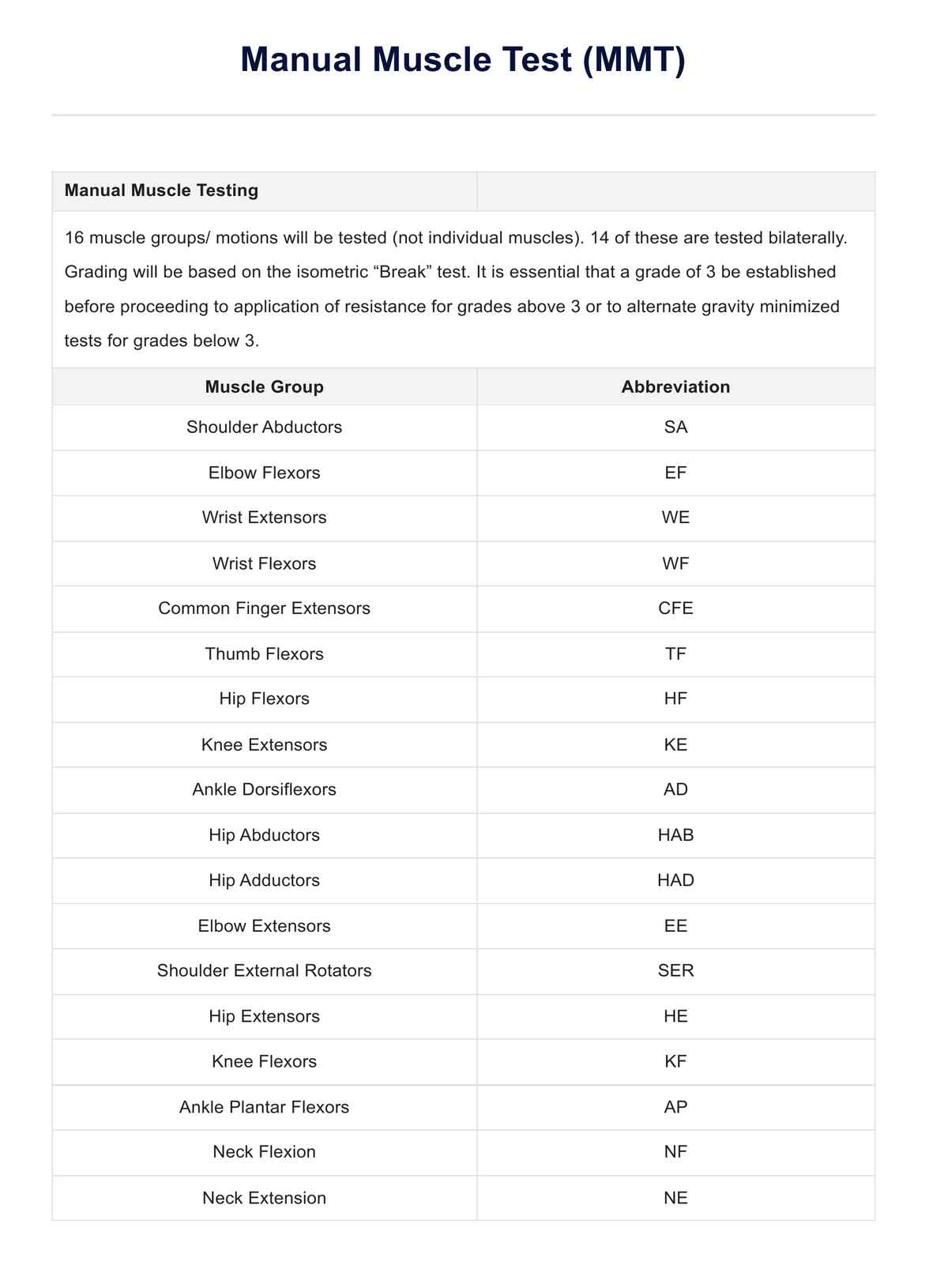The legitimacy of muscle testing remains a subject of debate in the scientific community, with some studies suggesting potential limitations in its reliability and validity. While some practitioners find value in its use as a diagnostic tool, others question its effectiveness due to inconsistencies and subjective interpretation.

Muscle Test
Discover everything you need to know about muscle testing, examples, and Carepatron's free PDF download to help you better understand this technique.
Muscle Test Template
Commonly asked questions
Muscle testing is typically performed by applying gentle pressure to specific muscles while the tested individual resists that pressure. The response of the muscle provides information about its strength, function, and potential weaknesses.
To test yourself for muscle strength and function, select a specific muscle or muscle group and apply gentle pressure while resisting the force with your own strength. Pay attention to any weaknesses or imbalances in the muscle's response, which may indicate areas for further evaluation or intervention.
EHR and practice management software
Get started for free
*No credit card required
Free
$0/usd
Unlimited clients
Telehealth
1GB of storage
Client portal text
Automated billing and online payments











